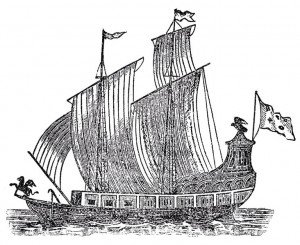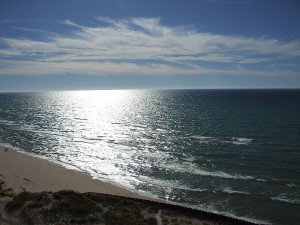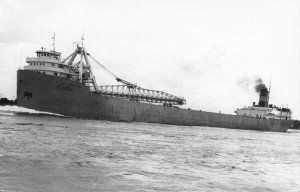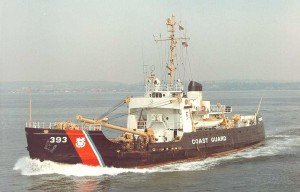The Great Lakes are truly a geographic wonder. If you have traveled on or near them during the summer months you are probably well aware of their natural beauty. In fact, the Great Lakes are one of America’s premiere vacation destinations covering a major part of the upper midwest. There are many cottages, hotels and resorts dotted along it’s shores that are excellent for family vacations. There are many interesting stories about the lakes and vessels who sailed and steamed on them. Many people who may not be familiar with the Great Lakes might also be a bit surprised by the degree in which they can be deadly.
Thank you for reading this post, don't forget to subscribe!
There are several good sites to stop by while vacationing in the Great lakes region. Visiting these sites will give you a lot of the history about the lakes and chances are you’ll be surprised by many of the stories exhibited. One is the Great Lakes Shipwreck Museum located at Whitefish Point, 18335 N. Whitefish Point Road, Paradise, Michigan. Another is The Dossin Great Lakes Museum. The museum is located in Detroit Michigan on the shore of Detroit’s historic Belle Isle, one of America’s grandest city parks. In Vermilion Ohio, on the south shore of Lake Erie. west of Cleveland is the Inland Seas Maritime Museum. The address is 480 main Street, Vermilion Ohio. Add to this list The Chicago Maritime Museum. The address is310 South Racine, Chicago Illinois. The museum celebrates the men and women who built, crewed, loaded and unloaded the ships and later on used Chicago’s waterways for enjoyment and recreation. The Lake Superior Maritime Visitor Center is a museum operated by the U.S. Army Corp of Engineers and is located at the entrance to the Duluth-Superior harbor in Duluth Minnesota. The five listed sites are only a few of the total scattered around the Great Lakes. There are many more interesting stops in all states that border the Great Lakes.

The Great Lakes cover an enormous area spanning some 1,500 miles from the end of Lake Superior to Lake Ontario. The first discoverers of these massive lakes were quite surprised that they contained fresh water. This was because they were so large, the early explorers actually referred to them as oceans. While they certainly aren’t oceans, what is certain, and some may not realize it, is that there are factors involved with these chain of lakes which often make storms more hazardous to shipping than the oceans themselves. The Great Lakes of course don’t possess the massive depths of the ocean but this fact in itself often make wave action more unpredictable and deadly to shipping. It’s believed that the lake waves come so frequently as compared to ocean waves that a ship gets hit by the next wave before she has a chance to recover from the first one. Interestingly enough, most Great lake sailors believe Lake Erie, the most shallow of the lakes, can put forth the most dangerous waves. By the same token, many sailors contend that Lake Superior is the best lake to be on during a gale because it offers much more room to navigate. Great Lakes shipwrecks fill the pages of many books.
Lake Michigan is a very long lake running north to south and is the only Great Lake which doesn’t have an international boundary. It’s length is about 300 miles. An interesting fact about Lake Michigan which many may not realize is that it’s full length is longer than the entire U.S. northeastern seaboard. While the southern end of the lake is at a latitude similar to the southern coast of Cape Cod, the northernmost part of the lake is closer to the North Pole than Montreal Canada. Another characteristic of Lake Michigan is that it doesn’t have an abundance of natural harbors that most of the other lakes have. Indiana and Chicago are located on it’s southern end and the Straits of Mackinac mark it’s northern end. Between these two points, natural harbors really exist only in northern Wisconsin to the west and Grand Traverse Bay to the east in the northwest section of lower Michigan. A good two thirds of the lake’s southern part is without natural harbors. Lake Michigan is also known for having a variety of different currents caused by water running through the Straits of Mackinac. Weather in Lake Michigan also produces west to east crosswinds. Lake Michigan beaches on the eastern shore are characterized by their large sand dunes. As you can see, the lake is much more affected by geography than an ocean.
One of the most publicized Great Lake shipwrecks occurred in November of 1958 and was an exceptionally surprising event because of the ship involved. In fact, when it occurred it was the biggest Great Lakes disaster to date.

The lake freighter Carl D. Bradley was built in Lorain Ohio in 1927 by the American Shipbuilding Company.. Lorain was a big ship building port located on the southern shore of Lake Erie just a bit west of Cleveland Ohio. The Bradley was built for the Bradley Steamship Company which was owned by U.S. Steel. When the vessel was launched, it was hailed as being the longest lake freighter to enter service. The Bradley at 640 feet in length was longer than two football fields. Built using riveted steel plates, the Carl D. Bradley was considered unsinkable and the safest vessel on the Great Lakes. Compared to earlier ship construction, the Carl Bradley was indeed a modern vessel for 1927.
The Carl Bradley was in service for decades. It wasn’t until the year 1958 where she and her crew met their doom. Like almost all Great Lakes ship disasters, there were some differing of opinion as to what exactly occurred. What is known was that there was some weakness reported in some of her plates. Missing rivets had been replaced with bolts and thus would have been fully repaired during the winter off season. When the Bradley was built in 1927, the use of rivets was the method of securing the steel plates. Since that time, welding is the method employed.
It’s well known that the long lake freighters like the Carl D. Bradley were built to be somewhat flexible. In other words, they were built like a tall building, being able to sway or bend rather than snap apart. After a strong lake storm it was quite common for crew members to pick up buckets full of torn off rivets. When a rivet would snap off during a storm it would shoot through the air like a bullet. It would be very dangerous to be in the immediate area. Many shipwrecks on the Great Lakes could easily have started with popping rivets.
The Carl D. Bradley’s last voyage would occur during November of 1958. November was considered the last month for lake traffic. Not all vessels would sail during November but the Bradley with her large length and several other large vessels, some approaching 700 feet, would try to get their last runs in. The Bradley steamed up Lake Huron and then turned west to go through the Straits of Mackinac. After that, it was just a run down Lake Michigan to her destination of Burlington Indiana where she would unload her cargo of limestone. In the book Great Lakes Shipwrecks and Survivals by author William Ratigan, the Carl Bradley set out from Burlington Indiana after the winds and waves had been building up for a few days. The book points out that the rule of thumb regarding Great Lakes storms is that it takes three days for the storm to blow in and another three days to blow out. When the Bradley departed Indiana, the storm crossing Lake Michigan would probably have been at full strength. November storms on the Great Lakes, while not uncommon, were certainly not welcome. Over the centuries, the month of November has been no stranger to ship wrecks.
All accounts about the last voyage of the Carl Bradley were that the ship steamed northward on November 17th and was handling the storm well. Late in the afternoon of November 18th, as the ship was approaching the Beaver Islands, northwest of Traverse City Michigan, things changed fast. The captain and first officer were in the pilot house which on a Great Lakes freighter was located on the bow. The other superstructure was at the stern. Normal sounds of strain were heard by there was really nothing to do but the captain which wasn’t all too irregular during a gale. Then the sound of thuds were heard, each getting a bit louder. Looking back out of the pilothouse toward the stern, the captain and first officer could see the stern bending downward. Seconds later the stern bent downward more. At this point there was really nothing anyone could do but watch. When the situation looked worse, the captain had the first officer radio out ‘maydays”. The captain sent out an abandon ship signal with his horn and everybody went for the life jackets. At about this same time the final thud was heard and the ship broke in two.This also cut off power to the radio.

Life rafts were employed, crewmen were thrown into the water and the two sections of the carl D. Bradley were headed to the bottom of Lake Michigan. The distress calls were heard by the Coast Guard and boats and aircraft were deployed but in a storm through darkness the Coast Guard was hampered in getting their boats to the scene in any timely manner. They were well aware of the search area which was only about 47 miles from the nearest Coast Guard station but getting there in a gale was another thing. Real recovery couldn’t happen until dawn and by that time the freezing cold water of Lake Michigan would surely take it’s toll.
The scope of this disaster wouldn’t be realized until sunrise. The two Coast Guard cutters and a German freighter that made it to the scene were able to retrieve only two survivors. One was the first officer and another a deckhand. Only two survivors out of a thirty-five man crew. The swiftness in which the breakup occurred, the quick sinking of the two sections and the freezing water certainly made chances of survival slim. In a way, it was quite the opposite of what occurred to the Titanic about fifty years earlier in the North Atlantic. The Titanic took on water and there was a reasonable amount of time to get lifeboats prepared. Not the case with the Carl D. Bradley.
When you look at the design of a lake freighter, you can clearly see that the weak point of the vessel would be in the center. This was well known to almost everyone. In fact, a lake freighter is much more vulnerable when it steams empty. To compensate a bit for this, the captain took on a water ballast in Indiana that compensated for about half a normal cargo load. Freighters handle lake storms better when weighed down a bit. Sitting higher in the water increases the chances of a breakup in a gale.
The breakup and sinking of the Carl D. Bradley demonstrated that the Great Lakes present unique dangers to sailors and that whether a vessel happens to be large or small, lake storms can be devastating.
Boatmen have lived with danger for a long time. A century earlier, steamboats had their own problems on our inland river system. Before the advances in construction, boiler explosions were a common occurrence. The following two articles describe the deadly explosions of the river steamboats Sultana off Memphis Tennessee and the Saluda near the dock in Lexington Missouri.
(Photos and images are in the public domain)

